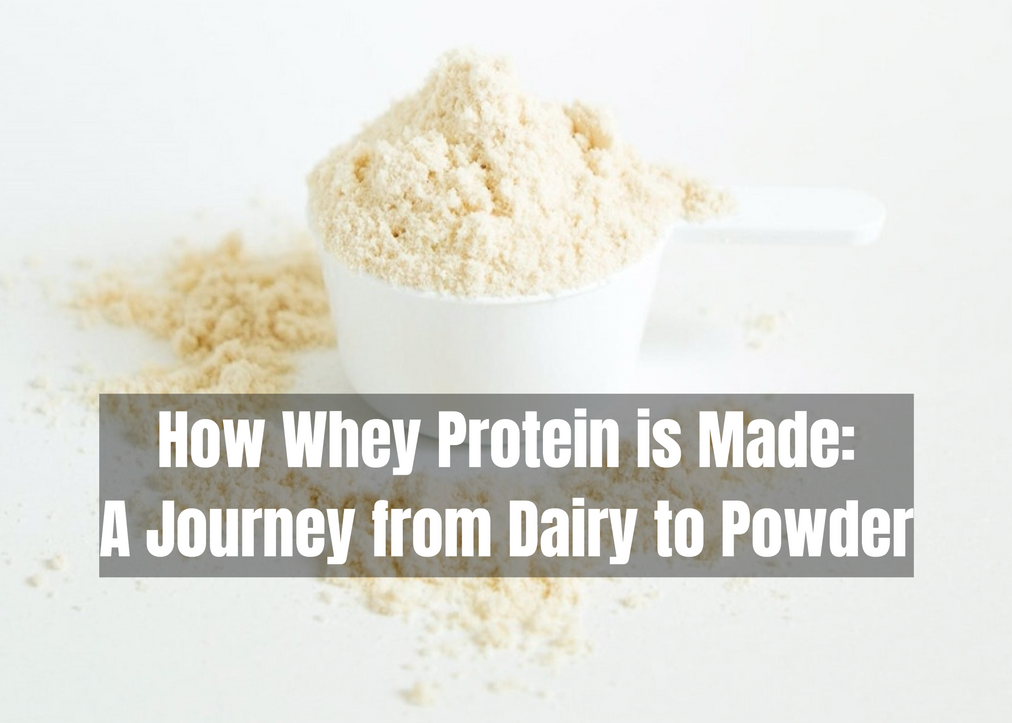Posted by Kaha Nutrition on 7th May 2024
How Whey Protein is Made: A Journey from Dairy to Powder
As a nutrition enthusiast, you might have heard about whey protein, especially if you're involved in any kind of fitness community. It's touted for its high-quality protein content and fast absorption, making it a staple supplement for many athletes and health-conscious individuals. But have you ever wondered how whey protein is actually made? Let’s delve into the fascinating process that transforms ordinary milk into this powerful protein supplement.
The Origin: Milk
Whey protein begins its journey as cow's milk, which is comprised of approximately 87% water and 13% solids. These solids include fats, carbohydrates, proteins, vitamins, and minerals. The proteins in milk can be divided into two main types: casein (about 80%) and whey (about 20%).
Step 1: Curdling
The first step in the production of whey protein is the curdling of milk. This is typically done in a cheese-making process. During this process, special enzymes or acidic substances like lemon juice are added to milk, causing it to separate into solids (curds) and liquid (whey). The curds, which contain most of the fat and casein protein, are used to make cheese.
Step 2: Separation
Once the milk has curdled, the liquid whey is separated from the curds. Initially, this whey is in a liquid form and contains various milk solids including proteins, fats, carbohydrates, vitamins, and minerals. At this stage, whey is only about 1% protein by weight, so it must be concentrated and purified.
Step 3: Concentration
The liquid whey undergoes a process of microfiltration or ultrafiltration to remove the fats and carbohydrates. This concentration process filters out larger elements and passes the smaller proteins through, resulting in a liquid rich in whey protein.
Step 4: Purification
Following concentration, the whey protein undergoes further purification to remove any remaining fats and carbohydrates. The goal here is to increase the protein content of the product. Techniques like dialysis or ion exchange are often employed, which help in achieving high protein purity and quality.
Step 5: Drying
The final step in the production of whey protein is drying. The purified whey protein liquid is turned into a powder through a process called spray drying, which involves spraying the liquid into a heated chamber. The heat causes the water to evaporate quickly, leaving behind dry whey protein particles.
Final Product
The resulting product is whey protein powder, which can vary in protein content. Common forms of whey protein include whey protein concentrate (WPC), which has a lower protein content (about 70-80%) and includes more fats and carbohydrates, and whey protein isolate (WPI), which is more than 90% protein and has fewer fats and carbohydrates.
Conclusion
Whey protein is more than just a supplement; it's a byproduct of cheese production that undergoes a remarkable transformation. From a liquid present in dairy to a fine, powdered form, whey protein represents a fantastic convergence of food technology and nutrition. Whether you’re an athlete looking to improve recovery or someone interested in maintaining muscle mass, whey protein offers a convenient and efficient solution to meet your dietary protein needs.
Hopefully, this breakdown helps you appreciate the complex process behind one of the most popular nutritional supplements in the market. Next time you scoop some whey into your shake, you'll know exactly what went into making it.

